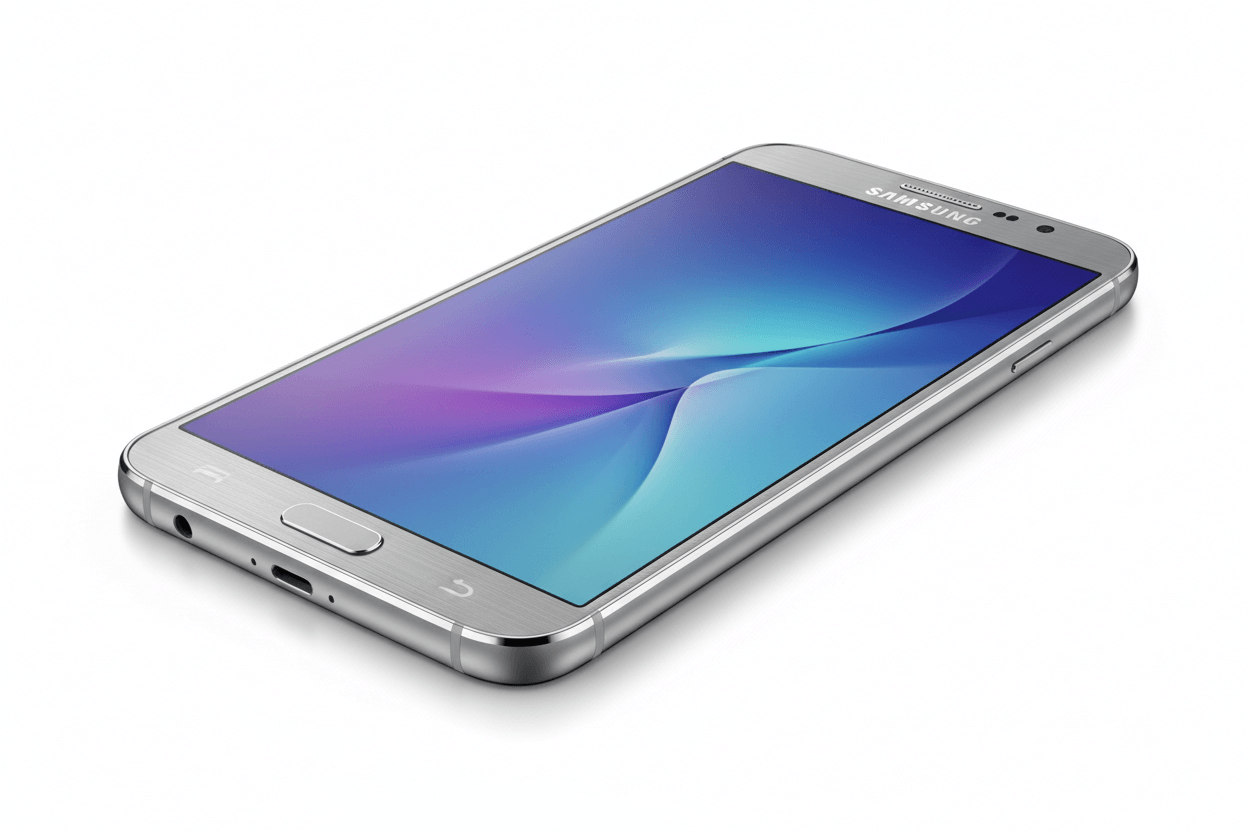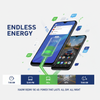Is Samsung Galaxy Alpha still a good secondary phone

Introduction of Samsung Galaxy Alpha
Even though the Samsung Galaxy Alpha was launched way back in 2014, many people wonder whether it still makes sense as a secondary phone today. With the rapid pace of smartphone innovation, using an older device might sound risky — but there are scenarios where a compact, lightweight, and inexpensive handset can still serve useful purposes. In this blog, we'll examine the pros and cons of using the Galaxy Alpha today in the Indian context — focusing on performance, software, battery life, usability, and whether it’s a viable pick for secondary use.
A Quick Look at What the Galaxy Alpha Is
To understand whether the Galaxy Alpha works well now, let's recap its key specs and original positioning:
-
It was launched in India at ₹39,990(approx.).
-
The phone has a 4.7-inch Super AMOLED display with a 720×1280 resolution.
-
Under the hood, it runs on a Samsung Exynos 5 Octa 5430 (quad-core + quad-core) with 2 GB RAM, and 32 GB internal storage — but no microSD slot.
-
The camera setup: a 12 MP rear camera (supports 4K video) and 2.1 MP front camera.
-
It originally ran Android 4.4.4 KitKat.
-
Other features include a fingerprint sensor, heart-rate monitor, LTE, NFC, and a 1,860 mAh removable battery.
-
It is notably lightweight and slim: 115 g and 6.7 mm thickness.
Given these, the Galaxy Alpha was pretty premium for its time, especially due to its metal frame.
Why People Might Consider It as a Secondary Phone Today
Using the Galaxy Alpha as a secondary phone (i.e., not your daily driver but for calls, some browsing, backup SIM, or specific purposes) can make sense in several situations:
Compact and Lightweight Design
-
The 4.7″ screen is small by today’s standards, which makes the phone very easy to pocket and carry around.
-
At just 115 g, it’s comfortable for one-handed use, which is a big plus for a secondary “on-the-go” device.
Build Quality
-
The metal frame gives it a premium feel, making it more durable and stylish than many plastic-backed phones.
-
Despite its age, this build quality can still stand up to daily handling, especially in a secondary role.
4G Support
Low Cost (Used / Refurbished)
-
Since it’s a very old model, you’re likely to find used or refurbished units at a much lower cost than a new secondary phone.
-
If you already own one, you don’t need to invest heavily to repurpose it.
Simplicity
-
For someone who only needs a phone for calls, WhatsApp, or as a backup, the Alpha’s modest specs may be sufficient.
-
The smaller screen also means lower power consumption than modern, large, high-refresh panels — potentially decent standby time, depending on battery health.
The Challenges of Using the Galaxy Alpha in 2025
However, there are significant drawbacks to consider, especially in 2025. These risks could outweigh the benefits depending on your use.
Software & Security
-
The Alpha originally shipped with Android 4.4.4 and received an Android 5.0 Lollipop update.
-
There’s no recent software support or security updates from Samsung.
-
This means vulnerabilities and compatibility issues with modern apps are likely. Many newer apps may not work well (or at all), and older versions may pose risks.
Battery Health
-
The original battery is only 1,860 mAh, which is very small by today’s standards.
-
Given its age, any unit available today is likely to have degraded battery capacity, unless the battery has been replaced. That could mean very poor battery life, especially with aging cells.
-
Even though the battery is removable, sourcing a healthy replacement may be difficult and might not be cheap.
Performance Limitations
-
With 2 GB RAM, multitasking and modern applications (especially heavier ones) will struggle.
-
The processor (Exynos 5430) is outdated, meaning performance bottlenecks for many modern tasks.
-
The lack of expandable storage (no microSD) means you're stuck with 32 GB — which might not be enough if you plan to store media or a lot of apps.
Camera & Multimedia
-
While the 12 MP camera was decent in its time, in 2025 it will likely lag behind modern phone cameras in quality, low-light performance, and video.
-
The front camera is very weak by today's standards.
Connectivity & Features
-
It lacks modern features like Wi-Fi 6, newer Bluetooth versions, or high-speed fast charging.
-
Some newer apps or services might not optimize for very old hardware.
-
The removable battery and micro-USB (if that’s what the model has) also feel outdated.
Availability of Parts and Repairs
-
Spare parts like a new battery, screen, or other components might be harder to find.
-
Servicing older phones may not be cost-effective.
Use-Case Scenarios Where It Still Makes Sense
Given the pros and cons, here are scenarios in which the Galaxy Alpha could still work fairly well as a secondary phone in India:
-
Emergency / Backup Phone
Use it as a fallback device — for SIM 2, or in case your main phone is out of battery or broken. -
Travel / Local SIM
If you travel to rural areas or use a local SIM occasionally, you could carry the Alpha just for calls or data, especially if it’s small and light. -
Minimalist or Simplified Use
For someone who doesn’t want or need a powerful phone for work — only for calls, SMS, and basic chatting — it could suffice. -
Kids or Elderly Use
As a “first phone” for someone who doesn’t use heavy apps, the Galaxy Alpha’s simplicity can be an asset. -
Budget Constraints
If you're looking for a very cheap secondary phone (used/refurbished), it might be more cost-efficient than buying a new, entry-level smartphone — if battery and condition are good.
Alternatives to the Galaxy Alpha for Secondary Use
While the Alpha has some charm, it's wise to compare with modern alternatives. A few contemporary (or recent) phones might make more sense as a secondary device:
-
Samsung Galaxy A17 5G: A modern, budget 5G phone. Better battery, connectivity, and software.
-
Samsung Galaxy A55 5G: More advanced, but possibly overkill for “secondary phone” needs.
Depending on your budget, you could also look at second-hand newer models (from 2018–2020) which may offer a better balance of performance and longevity.
My Verdict: Is It Still a Good Secondary Phone?
Short answer: Maybe — but only in very specific conditions.
-
Yes, if you find a well-maintained unit, possibly with a replaced battery, and your usage is light: calls, SMS, WhatsApp, or as a backup. The compact size and metal build are big pluses.
-
No, if you expect to run modern apps, need good battery life, or want security and software support. For these, a more recent cheap or used smartphone is a better bet.
In 2025, software support and battery health are the biggest risks when relying on a 2014 phone. Unless you're okay with those compromises, it's more of a niche, sentimental, or very budget-conscious backup device than a functionally reliable secondary phone.
FAQs of Samsung Galaxy Alpha
Q.1. Does the Galaxy Alpha support 4G in India today?
Yes — it's built with 4G LTE support and works with many Indian networks.
Q.2. Can I get software updates or security patches?
No — the phone’s software support ended long ago (last major was Lollipop), so it likely won't receive any new patches.
Q.3. Is it possible to replace the battery?
Yes, it has a removable battery, but finding a healthy or original replacement might be tricky and possibly expensive.
Q.4. Will modern apps run smoothly on it?
Not really — with 2 GB RAM and an old processor, heavy or newer apps may lag or not run optimally.
Q.5. Should I buy one now for secondary use?
Only if you find a good-condition used unit at a low price, and you're okay with older hardware and battery limitations. Otherwise, a newer budget phone makes more sense.





